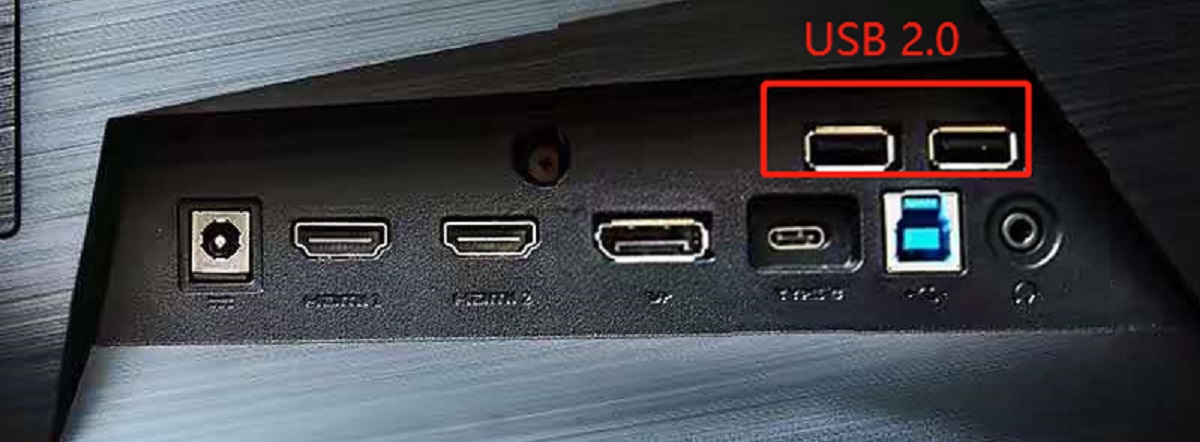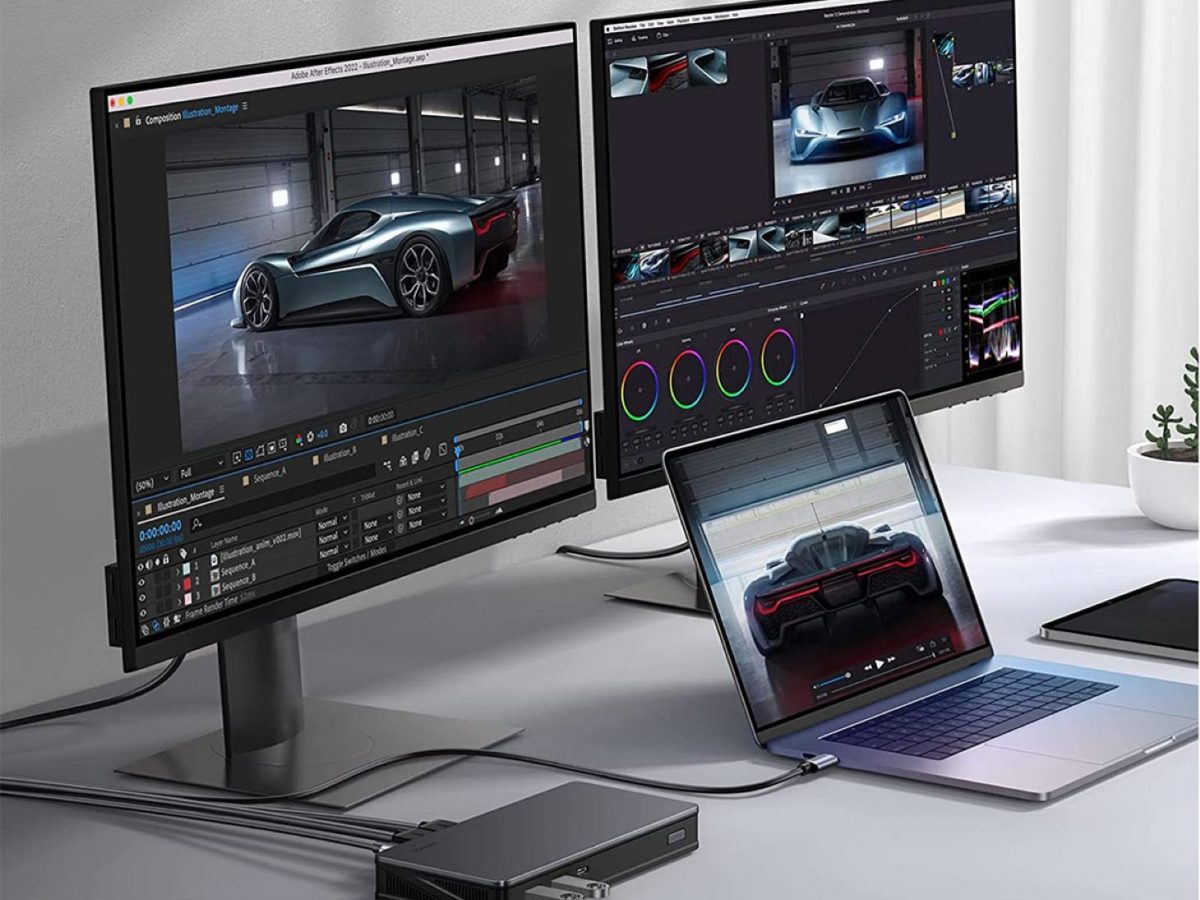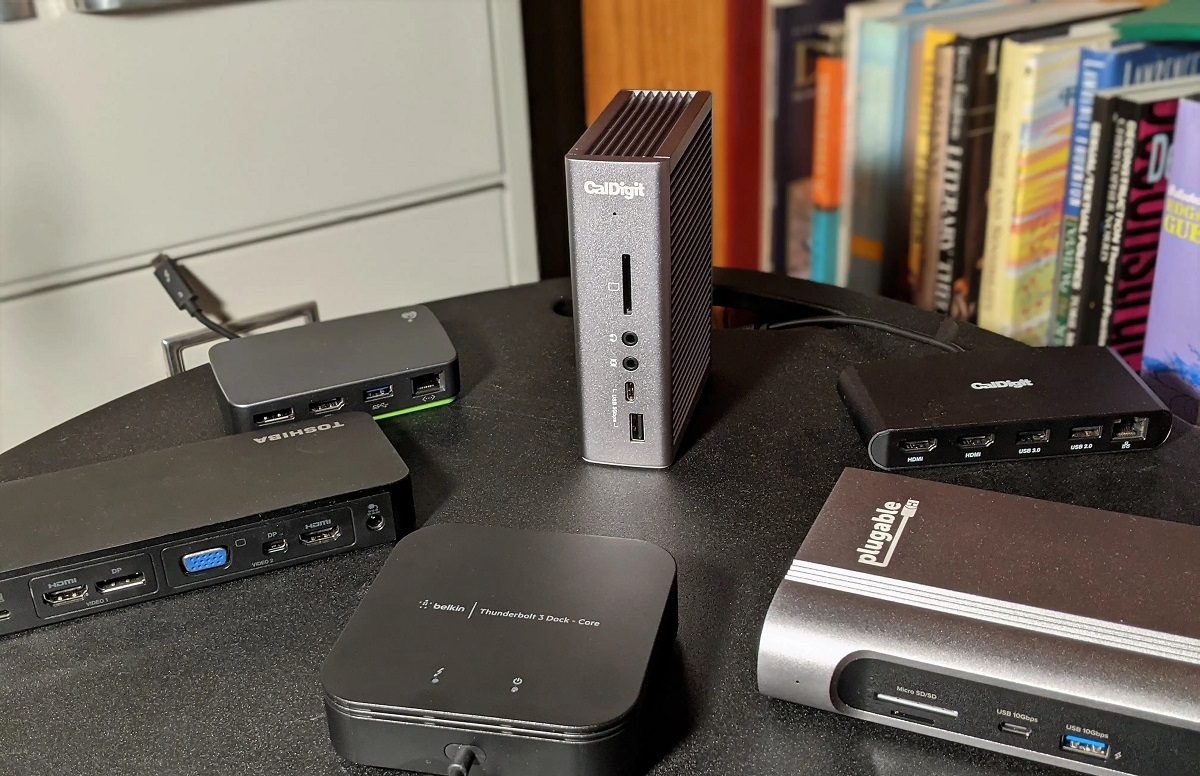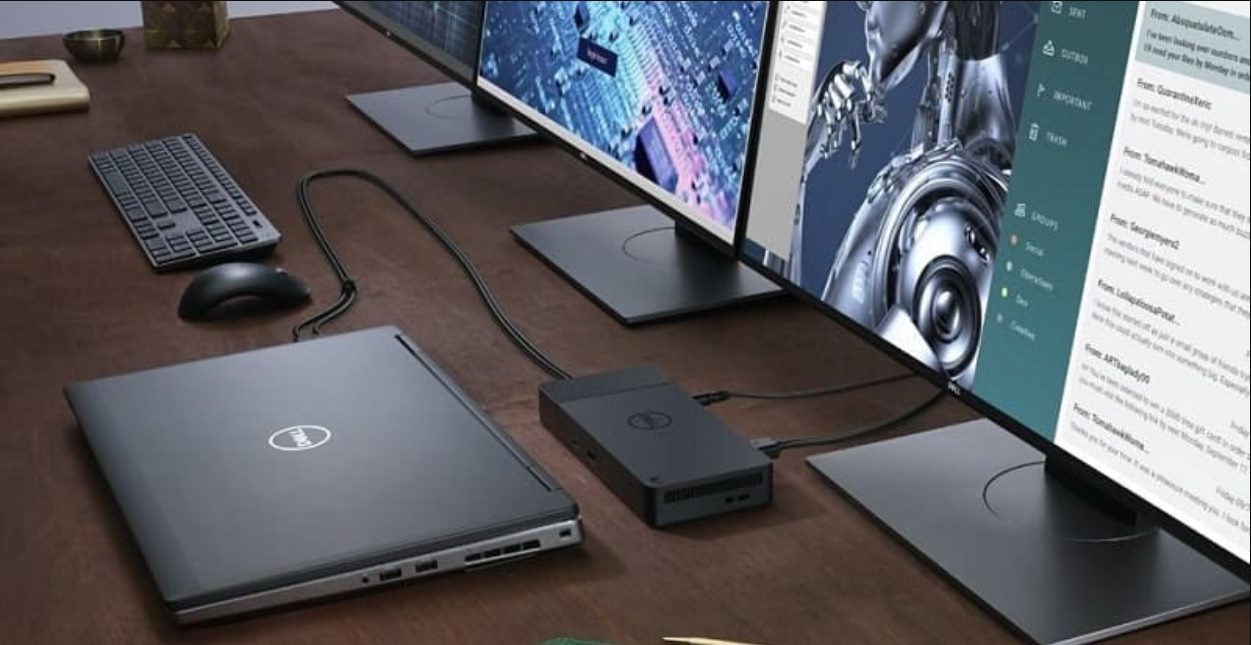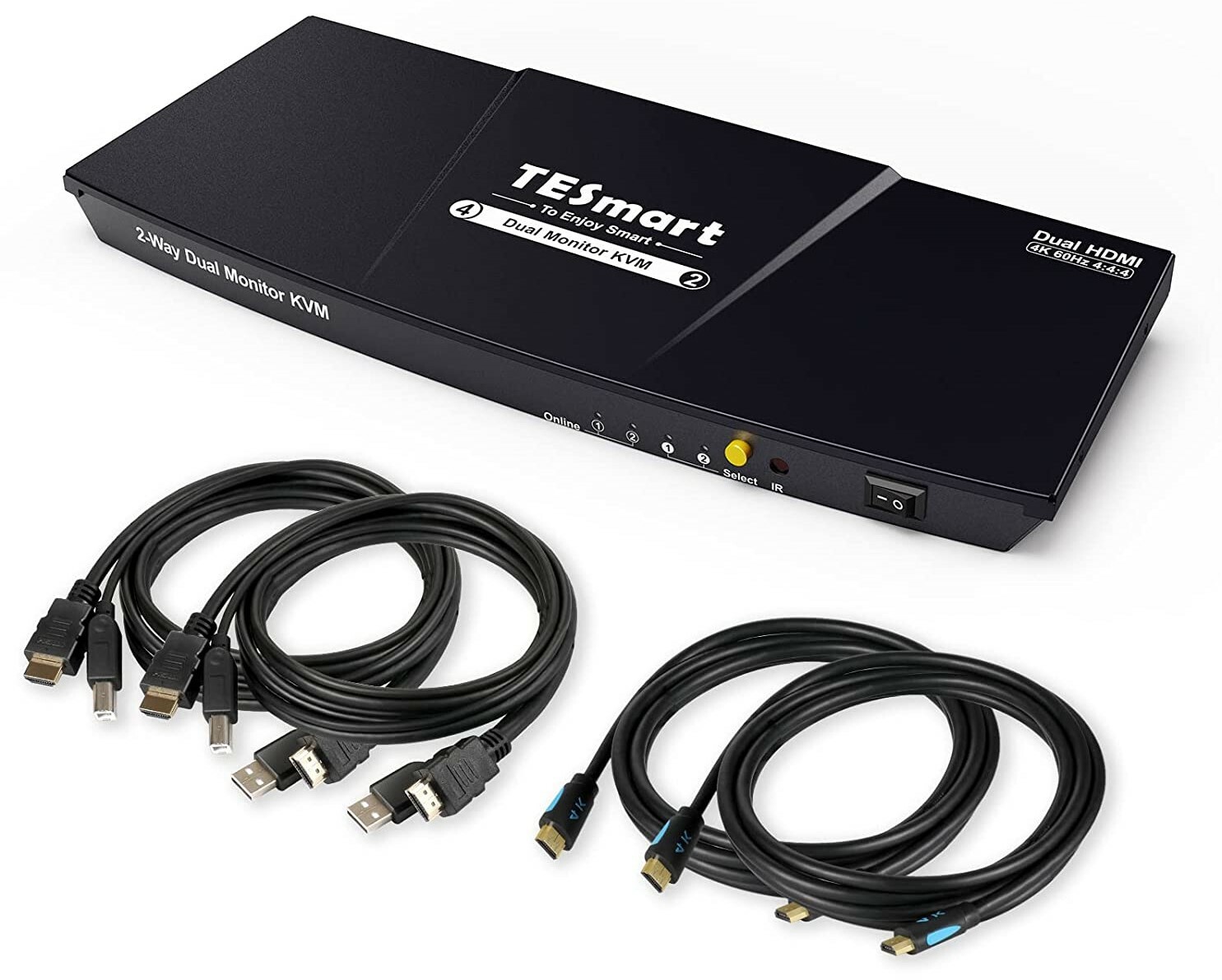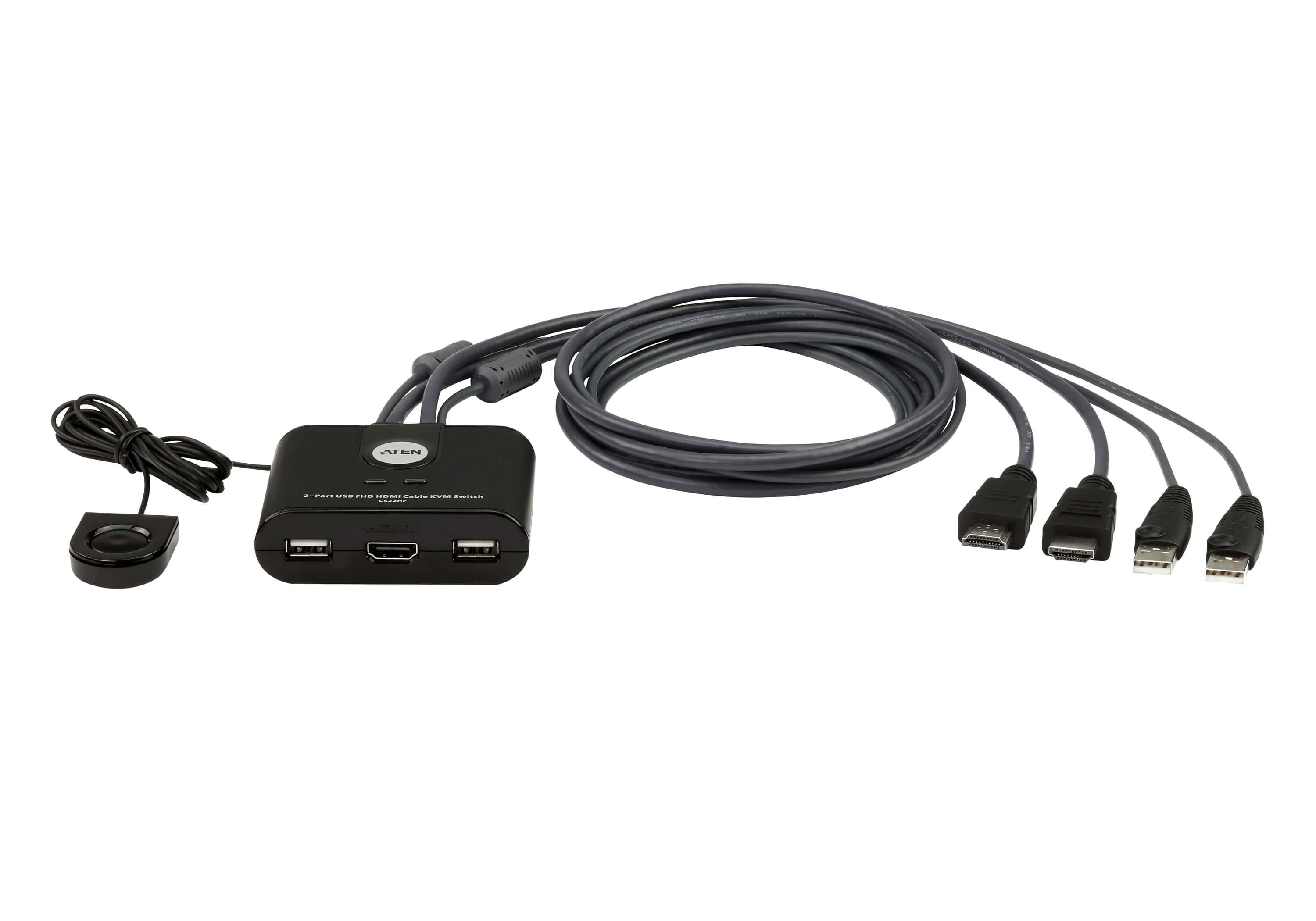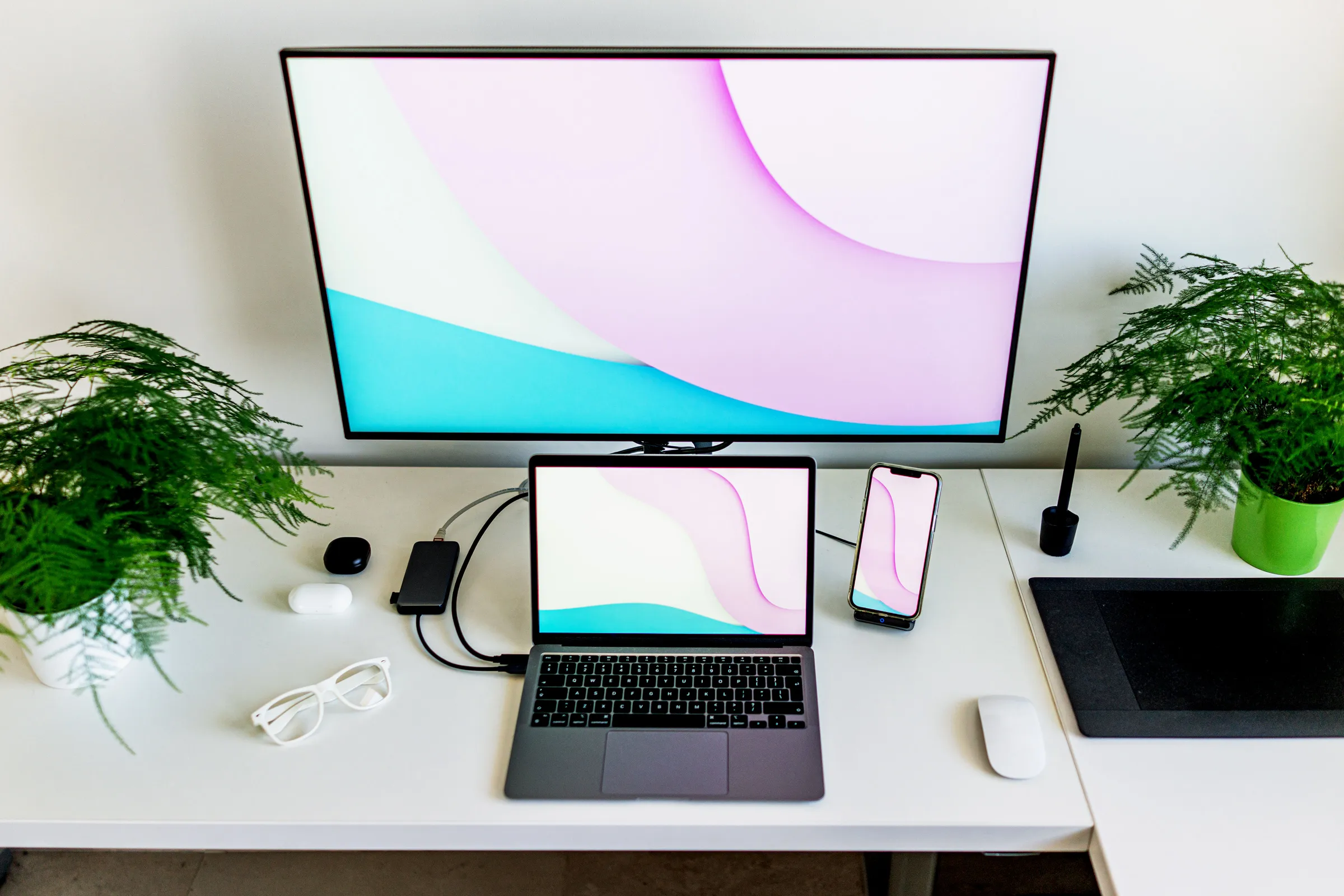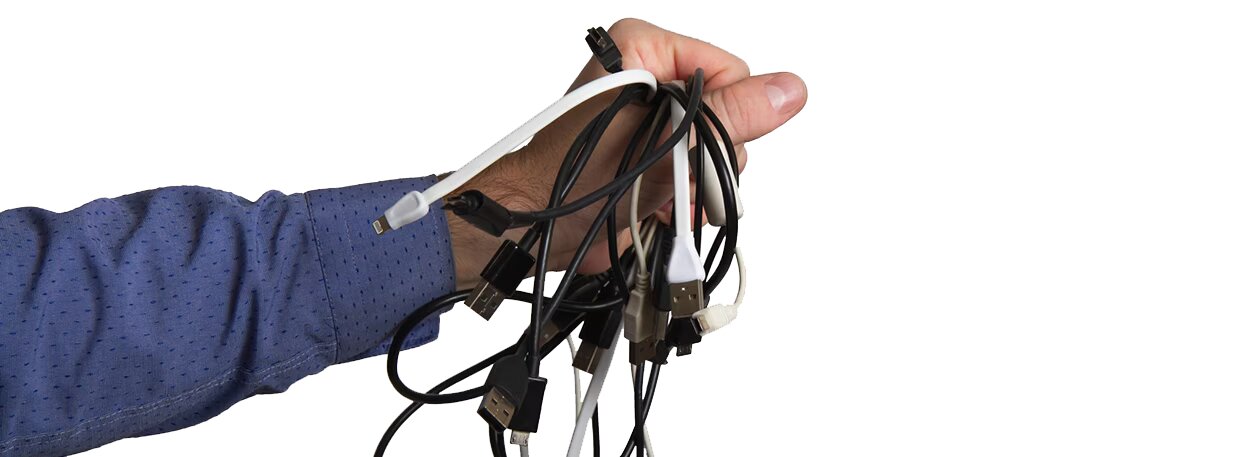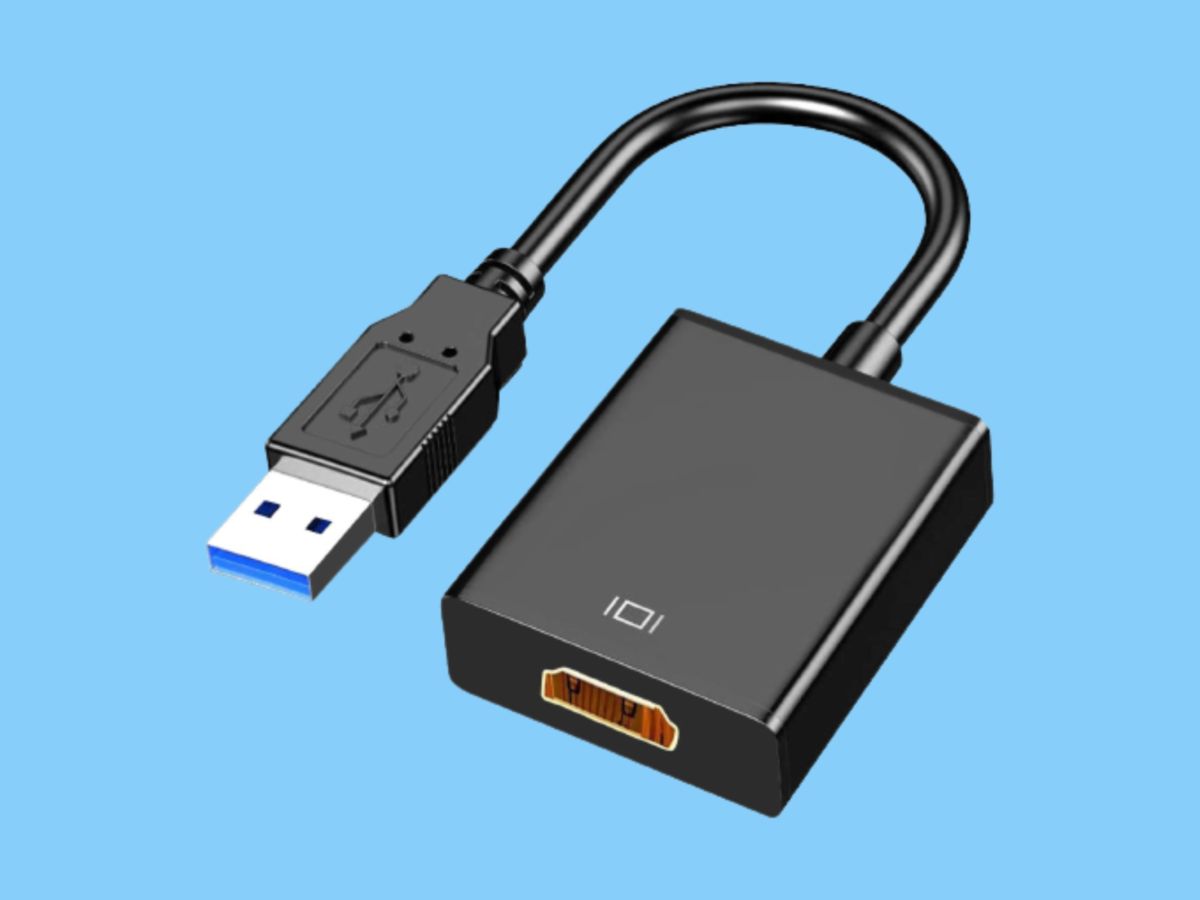Introduction
Welcome to the world of monitors with USB ports! In this digital age, where multiple devices surround us, having the convenience of USB ports on your monitor can be a game-changer. USB ports on monitors allow you to connect various peripherals, such as keyboards, mice, webcams, and USB storage devices, without the hassle of reaching for the back of your computer tower. This added functionality maximizes efficiency and minimizes cable clutter on your desktop.
Whether you are a gamer, a graphic designer, a business professional, or simply someone who enjoys the benefits of a clean and organized workspace, understanding how to use USB ports on your monitor is essential. In this guide, we will walk you through the steps of connecting and utilizing USB ports on your monitor, so you can make the most of this convenient feature.
Before we delve into the practical aspects, let’s take a moment to discuss the benefits of using USB ports on your monitor. Firstly, having USB ports on your monitor eliminates the need for additional USB hubs or extension cables, allowing you to save money and keep your setup tidy. Secondly, it provides easy access to USB ports, particularly when your computer tower is tucked away or in an inconvenient position.
Additionally, USB ports on monitors offer the advantage of improved accessibility. Instead of fumbling around behind your computer, trying to locate the correct port, you can simply connect your USB devices to the ports right in front of you. This is especially useful for frequently connecting and disconnecting devices such as external hard drives or thumb drives.
Now that we understand the benefits of using USB ports on your monitor, let’s explore what you will need to get started. So grab your monitor’s user manual, any necessary cables, and let’s dive into the world of convenience and efficiency!
Why Use USB Ports on Monitor
USB ports on monitors offer a range of advantages that can greatly enhance your computing experience. Let’s take a closer look at why you should consider utilizing the USB ports on your monitor:
1. Convenience: One of the primary reasons to use USB ports on your monitor is the convenience they provide. Instead of constantly reaching behind your computer tower to connect or disconnect USB devices, the ports on your monitor allow for easy access right in front of you. This saves time and effort, making it a breeze to connect peripherals such as keyboards, mice, or USB storage devices.
2. Cable Management: By using USB ports on your monitor, you can significantly reduce cable clutter on your desk. Rather than having multiple cables running from the back of your computer to your peripherals, you can consolidate them by connecting them directly to your monitor. This not only creates a cleaner and more organized workspace but also makes it easier to manage and maintain your setup.
3. Accessibility: USB ports on monitors make it much simpler to connect and disconnect USB devices. Whether you frequently use external hard drives, thumb drives, or other USB-powered devices, having the ports easily accessible on your monitor eliminates the hassle of searching for the correct ports on your computer tower. This is especially beneficial for individuals who need to quickly transfer files or use multiple USB devices on a regular basis.
4. Expandability: Monitors with USB ports provide expandability options for your computer setup. You can connect a variety of peripherals, such as webcams, microphones, or printers, directly to your monitor. This eliminates the need for additional USB hubs or extension cables, freeing up valuable USB ports on your computer tower for other devices. The ability to expand your setup seamlessly can be particularly advantageous for individuals with limited USB ports on their computers.
5. Device Compatibility: USB ports on monitors are typically compatible with a wide range of USB devices. Whether you have older USB 2.0 devices or newer USB 3.0 devices, you can generally connect them to the USB ports on your monitor without any issues. This ensures that you can easily integrate your existing peripherals into your monitor setup, preventing the need for additional adapters or compatibility concerns.
Now that you understand the many benefits of using USB ports on your monitor, let’s move on to the practical steps involved in connecting and utilizing these ports. Continue reading to learn how to make the most of this convenient feature!
What You Need
Before you begin using the USB ports on your monitor, there are a few things you will need to ensure a seamless experience. Here’s what you’ll need:
1. Monitor with USB Ports: Naturally, you will need a monitor that is equipped with one or more USB ports. Most modern monitors come with at least one USB port, while some advanced models may offer multiple ports. Check the specifications of your monitor or refer to the user manual to determine if it has USB ports. If you’re unsure, you can typically find this information on the manufacturer’s website as well.
2. USB Cable: To connect your USB devices to the monitor’s USB ports, you will need a USB cable. The type of USB cable you need will depend on the devices you plan to connect. For most peripherals, such as keyboards, mice, or thumb drives, a standard USB-A to USB-B or USB-A to USB-A cable will suffice. Make sure you have the appropriate cables on hand before proceeding.
3. USB Devices: Of course, to take advantage of the USB ports on your monitor, you will need USB devices or peripherals to connect. This can include items such as keyboards, mice, printers, webcams, external hard drives, or any other USB-powered devices you use regularly. Ensure that these devices are compatible with your monitor and have the required USB connection.
4. Monitor Manual: While not a physical requirement, having the monitor’s user manual will be helpful for reference throughout the process. The manual will provide specific instructions on connecting USB devices and enabling USB functionality on your particular monitor model. If you don’t have a physical copy, many manufacturers offer digital versions of their manuals on their websites.
It’s essential to gather these necessary items before getting started to ensure a smooth and frustration-free setup process. Having everything ready will save you time and help you avoid any unnecessary hiccups along the way. Once you have everything you need, you are ready to move on to the next steps of connecting and using the USB ports on your monitor.
Step 1: Check Your Monitor for USB Ports
The first step in using USB ports on your monitor is to determine whether your monitor is equipped with these ports. Follow these simple steps to check if your monitor has USB ports:
1. Examine the Monitor: Take a close look at the sides or back of your monitor. Look for small rectangular or square-shaped ports that resemble the USB symbol, which consists of three vertical lines with a horizontal line intersecting them. These ports are usually located near other video or audio ports on the monitor.
2. Consult the User Manual: If the ports are not readily visible, consult the user manual that came with your monitor. The manual should provide detailed information about the location and number of USB ports on your specific model.
3. Visit the Manufacturer’s Website: If you don’t have the manual or are unable to locate the USB ports visually, visit the manufacturer’s website. They often provide product information, including the number and location of USB ports on their monitors. Enter your monitor’s model number in the search or support section of the website to find the specific details you need.
It’s important to note that not all monitors come with USB ports. Older or budget models, for example, may not have this feature. If your monitor does not have USB ports, you may need to consider alternative solutions, such as using USB hubs or connecting devices directly to your computer tower’s USB ports.
Once you have confirmed that your monitor has USB ports, you can proceed to the next step of connecting the USB cable to the monitor. Read on to learn how to make the physical connection and prepare for using USB devices with your monitor.
Step 2: Connect the USB Cable to the Monitor
Now that you have confirmed that your monitor has USB ports, it’s time to connect the USB cable to the monitor. Follow these steps to establish the physical connection:
1. Locate the USB Ports: Identify the USB ports on your monitor. They are typically located on the back or sides of the monitor, next to other connectivity ports.
2. Insert the USB Cable: Take one end of the USB cable and insert it into one of the USB ports on the monitor. Ensure that the connection is secure and fully inserted into the port.
3. Connect the Other End: Depending on the type of USB devices you want to connect, connect the other end of the USB cable to either the device itself or to a USB hub that will then connect to your device. For example, if you want to connect a keyboard, insert the USB cable into your keyboard’s USB port. If you are using a USB hub, connect the USB cable to the hub, and then connect your devices to the hub.
4. Secure the Connections: Make sure all USB connections are secure and firmly plugged in. Check that there are no loose or partially inserted cables, as this could cause connectivity issues.
5. Repeat for Additional Ports: If your monitor has multiple USB ports and you have more USB devices to connect, repeat the above steps for each USB port that you plan to use.
It’s important to note that USB ports on monitors are typically USB 2.0 or USB 3.0 compatible. USB 3.0 ports offer faster data transfer speeds than USB 2.0 ports, so if you have USB 3.0 devices, consider using the USB 3.0 ports on your monitor for enhanced performance.
With the USB cable connected to your monitor, you have successfully established the physical connection between the monitor and your USB devices. However, in order to use these devices seamlessly, you need to enable USB functionality on your monitor. In the next step, we will guide you through the process of enabling USB functionality and configuring your monitor settings.
Step 3: Connect the USB Device to the Monitor
After connecting the USB cable to your monitor, it’s time to connect your USB device or peripheral to the monitor. Follow these steps to complete the connection:
1. Ensure the USB Device is Powered Off: Before connecting your USB device to the monitor, make sure it is powered off. This will prevent any potential data loss or damage to the device during the connection process.
2. Locate the USB Port on the Monitor: Identify the USB port on your monitor that you would like to use to connect your USB device. Remember, the USB ports are typically located on the back or sides of the monitor, near other connectivity ports.
3. Insert the USB Connector: Take the USB connector at the end of your USB device’s cable and insert it firmly into the USB port on the monitor. Ensure that the connection is secure and fully inserted into the port.
4. Power On the USB Device: Once the USB device is securely connected to the monitor, power it on. This can usually be done by pressing the power button on the device itself. Wait for the device to finish powering on and initializing.
5. Monitor Recognition of the USB Device: Most modern monitors will automatically detect and recognize the connected USB device. If this is the case, you should see a notification or an on-screen display indicating that the USB device has been detected and is ready for use. Some monitors may also require you to manually enable USB functionality in the monitor settings.
6. Repeat for Additional USB Devices: If you have multiple USB devices to connect, repeat the above steps for each device, making sure to connect each device to a separate USB port on the monitor if available.
It’s worth noting that some USB devices may require specific drivers or software to be installed on your computer in order to function properly. If prompted, follow the on-screen instructions to install the necessary drivers or software for your USB device.
With your USB device connected to the monitor, you are now ready to enable USB functionality on your monitor. Proceed to the next step to configure the monitor settings and enable the use of your USB devices smoothly.
Step 4: Enable USB Functionality on Your Monitor
After connecting your USB device to the monitor, you may need to enable USB functionality on your monitor to ensure that the device is recognized and functions properly. Follow these steps to enable USB functionality:
1. Access Monitor Settings: To begin, navigate to the settings menu on your monitor. This can usually be done by pressing the menu or settings button on the monitor itself. Consult your monitor’s user manual if you are unsure about how to access the settings menu.
2. Locate USB Settings: Once in the settings menu, locate the section related to USB settings. This may be labeled as “USB”, “Connectivity”, or something similar. Different monitors may have varying options and terminology, so refer to your monitor’s user manual for specific guidance.
3. Enable USB: In the USB settings menu, look for an option to enable USB functionality. This option is usually presented as a toggle switch or checkbox. Enable USB functionality to allow the monitor to detect and communicate with your connected USB devices.
4. Check USB Device List: Some monitors will display a list of connected USB devices in the settings menu. Verify that your USB device is listed and recognized by the monitor. If it’s not listed, there may be an issue with the connection or compatibility, and you may need to review the previous steps and troubleshoot the problem.
5. Adjust Additional Settings (if applicable): Depending on your monitor’s features, there may be additional settings related to USB functionality. These can include options for power output, device priority, or USB device management. Adjust these settings as necessary to suit your preferences or requirements.
6. Save and Exit Settings: Once you have enabled USB functionality and made any desired adjustments, save your changes and exit the settings menu. This will ensure that the settings are applied and retained for future use.
It’s important to note that not all monitors require manual enabling of USB functionality. Some monitors may automatically recognize and enable USB devices without any user intervention. However, it’s always a good idea to check the settings menu if you are experiencing any issues with your USB devices on the monitor.
With USB functionality enabled on your monitor, you can now take full advantage of your connected USB devices. If you encounter any problems or issues, don’t worry. In the next step, we will provide some troubleshooting tips to help you resolve common problems and ensure a smooth experience.
Step 5: Troubleshooting Common Issues
While connecting and using USB devices on your monitor is typically straightforward, occasionally you may encounter issues. Here are some common problems you may face and steps to troubleshoot them:
1. Device Not Recognized: If your USB device is not being recognized by the monitor, double-check the physical connections. Ensure that the USB cable is securely inserted into both the monitor and the device. Try connecting the device to a different USB port on the monitor to rule out any port-specific issues.
2. Power Issues: Some USB devices, particularly those that require additional power, may not receive sufficient power from the monitor’s USB ports. In this case, try connecting the device to a USB hub with external power, or directly to your computer tower’s USB ports.
3. Driver or Software Issues: Certain USB devices may require specific drivers or software to be installed on your computer for proper functionality. Check the manufacturer’s website for the latest drivers or software updates and install them accordingly.
4. Compatibility Problems: Ensure that your USB devices are compatible with your monitor. Some older devices may not work properly with newer monitors, or vice versa. Refer to the device manuals or contact the manufacturers for compatibility information.
5. USB Port Limitations: Monitors may have limitations on the number of USB devices they support simultaneously. Consult your monitor’s user manual or specifications to verify the maximum number of supported USB devices. Disconnect any unnecessary USB devices and check if the issue persists.
6. Monitor Firmware Update: In some cases, updating your monitor’s firmware can resolve compatibility or functionality issues with USB devices. Refer to the manufacturer’s website for firmware updates and follow their instructions for updating the monitor’s firmware.
7. Restart Devices: Simple troubleshooting steps, such as restarting your monitor, USB devices, and computer, can often resolve connectivity or recognition issues. Power off all devices, disconnect the USB cables, wait a few minutes, and then reconnect and power everything back on.
If you have tried the troubleshooting steps above and are still experiencing issues with your USB devices on the monitor, it may be necessary to contact the monitor manufacturer’s customer support or seek professional assistance. They can provide further guidance and support specific to your monitor model and USB device setup.
By following these troubleshooting steps, you can overcome most common issues related to using USB devices on your monitor. Now you’re ready to enjoy the convenience and functionality that USB ports on your monitor provide!
Conclusion
Utilizing USB ports on your monitor is a convenient and efficient way to connect and use USB devices. By following the steps outlined in this guide, you can easily set up and make the most of the USB ports on your monitor.
We began by discussing the benefits of using USB ports on your monitor, including the convenience, cable management, accessibility, expandability, and device compatibility they offer. We then outlined the necessary items you will need, such as a monitor with USB ports, USB cables, USB devices, and the monitor manual.
We walked you through the step-by-step process, which included checking your monitor for USB ports, connecting the USB cables to the monitor, connecting the USB devices to the monitor, enabling USB functionality on your monitor, and troubleshooting common issues that may arise.
By following these steps, you can create a clean and organized work environment, easily connect your USB devices without reaching behind your computer tower, and enjoy the convenience of having USB ports right in front of you.
Remember, it’s essential to refer to your specific monitor’s user manual for detailed instructions and to ensure compatibility with your USB devices. If you encounter any issues, don’t hesitate to reach out to the monitor manufacturer’s customer support for further assistance.
Now that you have mastered the use of USB ports on your monitor, enjoy the seamless integration of your USB devices and the enhanced productivity and convenience they bring to your computing experience.







